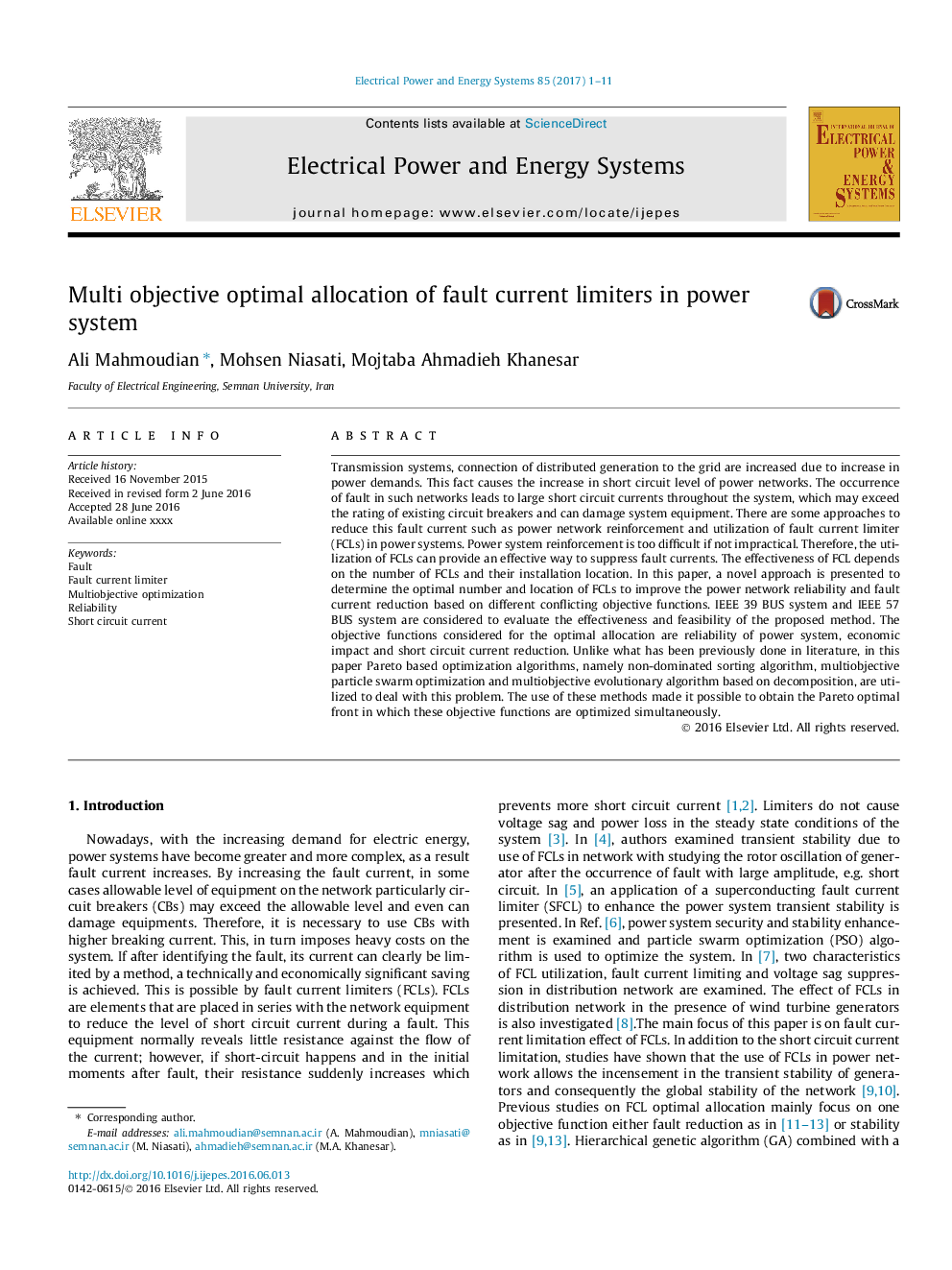| Article ID | Journal | Published Year | Pages | File Type |
|---|---|---|---|---|
| 399153 | International Journal of Electrical Power & Energy Systems | 2017 | 11 Pages |
•The installation of FCLs has a great effect to short circuit current suppression.•MOEA/D most probably generates the solutions which dominate the other algorithms.•NSGA-II algorithm results in more diverse solutions.
Transmission systems, connection of distributed generation to the grid are increased due to increase in power demands. This fact causes the increase in short circuit level of power networks. The occurrence of fault in such networks leads to large short circuit currents throughout the system, which may exceed the rating of existing circuit breakers and can damage system equipment. There are some approaches to reduce this fault current such as power network reinforcement and utilization of fault current limiter (FCLs) in power systems. Power system reinforcement is too difficult if not impractical. Therefore, the utilization of FCLs can provide an effective way to suppress fault currents. The effectiveness of FCL depends on the number of FCLs and their installation location. In this paper, a novel approach is presented to determine the optimal number and location of FCLs to improve the power network reliability and fault current reduction based on different conflicting objective functions. IEEE 39 BUS system and IEEE 57 BUS system are considered to evaluate the effectiveness and feasibility of the proposed method. The objective functions considered for the optimal allocation are reliability of power system, economic impact and short circuit current reduction. Unlike what has been previously done in literature, in this paper Pareto based optimization algorithms, namely non-dominated sorting algorithm, multiobjective particle swarm optimization and multiobjective evolutionary algorithm based on decomposition, are utilized to deal with this problem. The use of these methods made it possible to obtain the Pareto optimal front in which these objective functions are optimized simultaneously.
